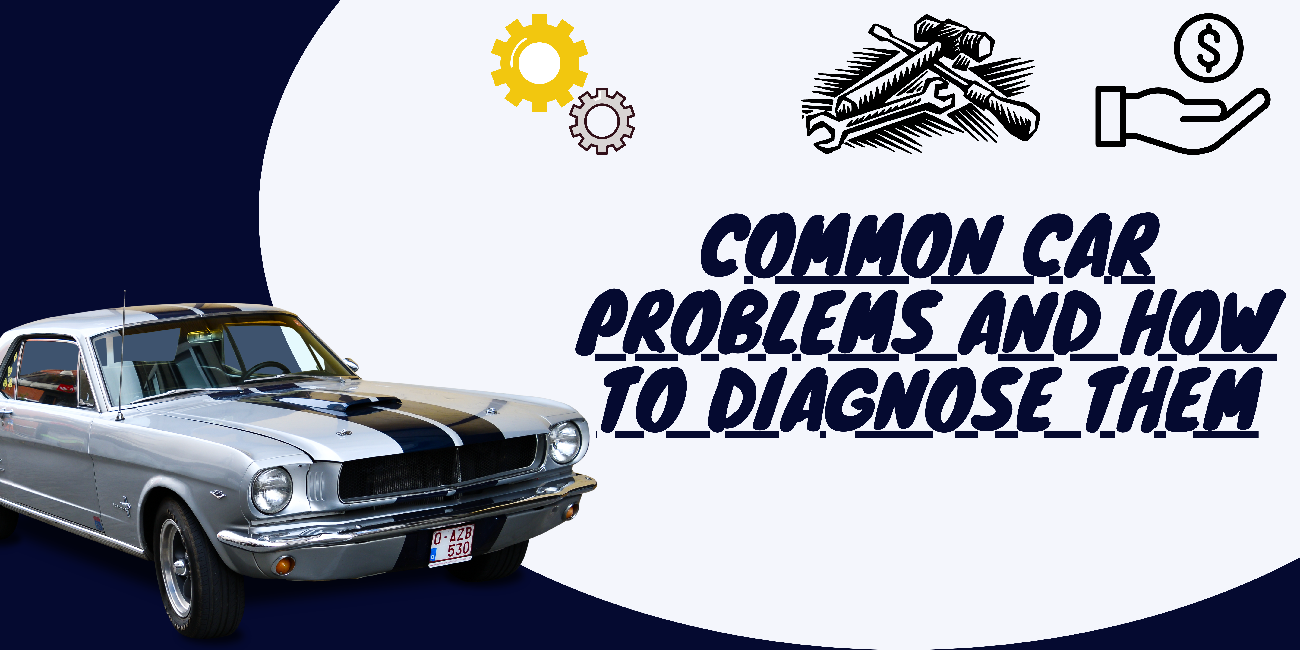
Common Car Problems and How to Diagnose Them
Common Car Problems and How to Diagnose Them
Owning a car comes with its fair share of responsibilities, including being aware of common car problems and knowing how to diagnose them. While it's always best to seek professional help for major issues, having a basic understanding of common car problems can help you identify and address minor issues promptly. In this blog post, we will explore some frequently encountered car problems and provide tips on how to diagnose them, empowering you to make informed decisions and potentially save on costly repairs.
Battery Issues: A dead or weak battery is a common car problem that can leave you stranded. If your car doesn't start or struggles to start, it may indicate a battery issue. To diagnose this problem, check if the interior lights are dim or if the headlights are weak when you attempt to start the car. If so, it's likely a battery problem. You can use a multimeter to test the battery's voltage or have it tested at an auto parts store. If the battery is faulty, replacing it should solve the issue.
Engine Misfires: An engine misfire can cause rough idling, reduced power, and even a flashing check engine light. To diagnose this problem, you can start by checking the spark plugs. Remove and inspect them for signs of wear, such as carbon buildup or worn-out electrodes. Additionally, faulty ignition coils or fuel injectors can also cause misfires. If the spark plugs appear to be in good condition, consider having a professional scan the vehicle's onboard diagnostic system for error codes to pinpoint the exact cause.
Overheating: If your car's temperature gauge rises to the red zone, it indicates an overheating problem. Possible causes include a malfunctioning thermostat, a coolant leak, or a faulty radiator fan. Start by checking the coolant level when the engine is cool. If it's low, there may be a leak. Inspect hoses and connections for any visible signs of leakage. Additionally, ensure that the radiator fan is functioning correctly. If the problem persists, it's advisable to seek professional help to prevent engine damage.
Brake Issues: Brake problems can manifest in various ways, such as squeaking or grinding noises, reduced braking power, or a spongy brake pedal. To diagnose brake issues, first, visually inspect the brake pads for wear. If they appear thin, it's time for a replacement. Squeaking or grinding noises can also indicate worn-out brake pads. Additionally, a spongy brake pedal may suggest air in the brake lines, requiring bleeding. If you're uncertain or notice other brake-related concerns, consult a certified mechanic.
Transmission Troubles: Transmission problems can lead to issues like gear slipping, delayed engagement, or rough shifting. One common diagnostic step is to check the transmission fluid level and condition. Low or dirty fluid can cause transmission issues. Ensure the vehicle is on level ground and follow the manufacturer's instructions to check the fluid. If the level is low, adding the appropriate fluid may temporarily solve the problem, but it's crucial to have the transmission inspected by a professional for any underlying issues.
Conclusion: While not an exhaustive list, these common car problems and their diagnostic tips can provide a starting point for identifying issues with your vehicle. Remember, when in doubt, it's always best to consult a qualified mechanic for a thorough diagnosis and repair. Regular maintenance, prompt attention to problems, and timely repairs will help keep your car running smoothly and minimize the risk of major breakdowns on the road.

